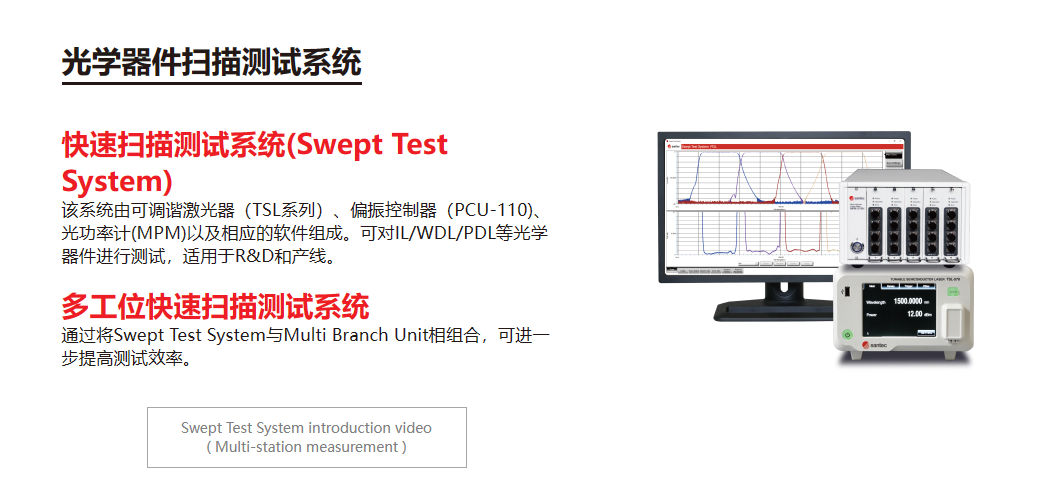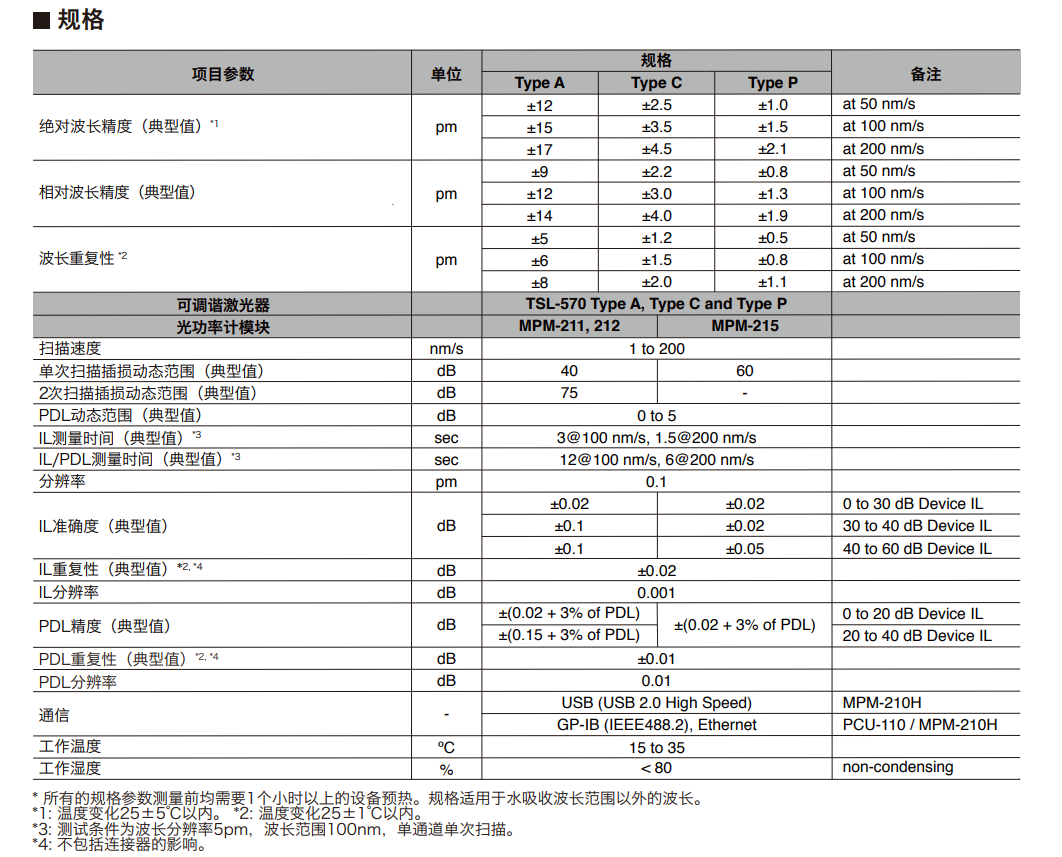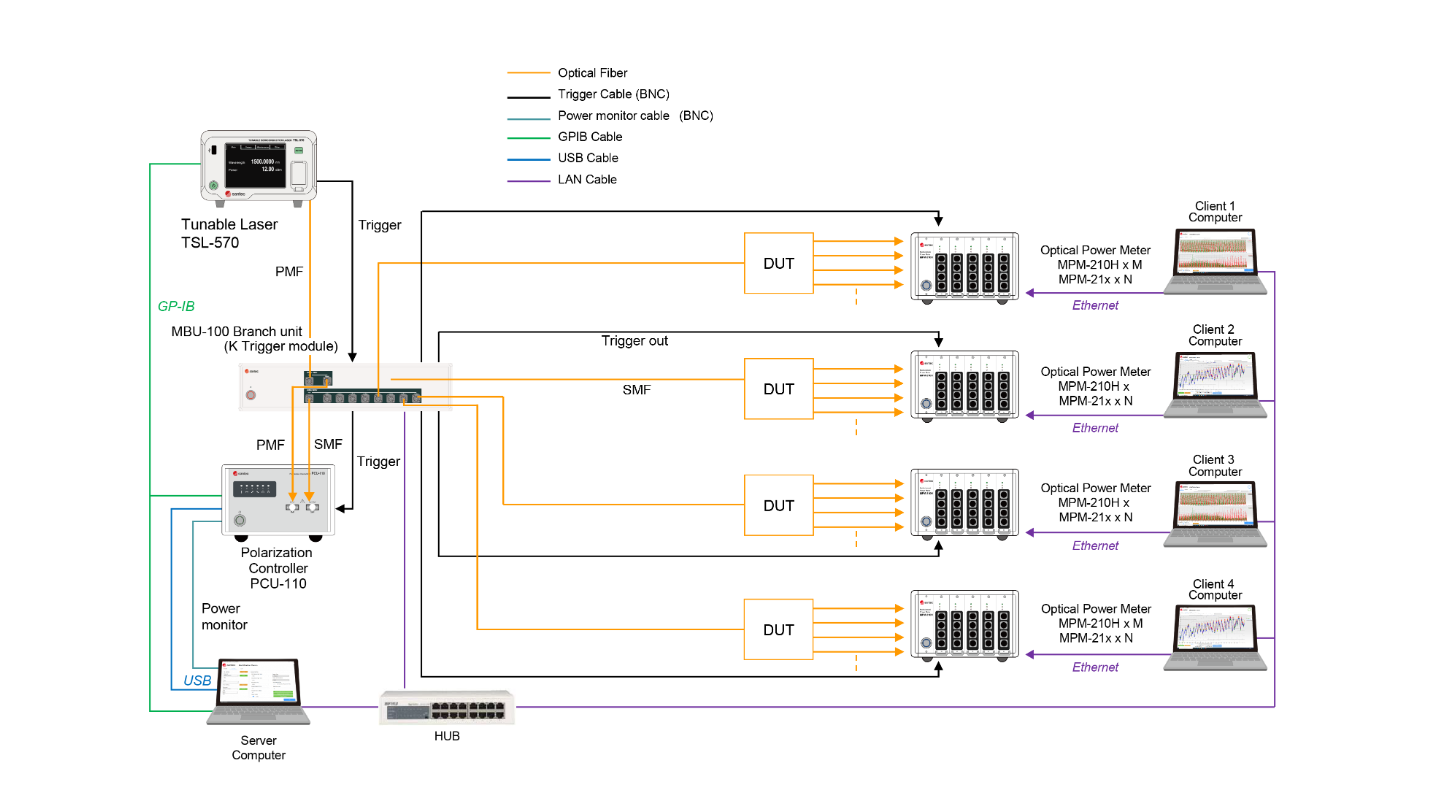What are WDL and PDL and what are the application scenarios for WDL and PDL measurements?
WDL and PDL are indicators of passive optical device characteristics:
- WDL: Wavelength Depend Loss, Wavelength Depend Loss, is the degree to which the insertion loss of a device varies with wavelength.
- PDL: Polarization Depend Loss, Polarization Depend Loss, is the maximum transmission difference of the device in different polarization states.
WDL and PDL reflect the wavelength stability and polarization stability of the device, and have an important impact on the performance of optical communication systems. Generally speaking, the smaller the values of these two indicators, the better the performance of the device.

What are the measurement methods for WDL and PDL?
There are three main techniques for WDL and PDL measurements: the scrambling/scanning method, the max/min search method, and the Mueller matrix method. Each of these three methods has its own advantages and disadvantages and is suitable for different application scenarios. I will briefly introduce the principles and characteristics of these three methods.
- Scrambling/Scanning Method: This method uses a high-speed scrambler to generate a series of uniformly distributed polarization states at the input of the device to be measured, and at the same time monitors the output power of the device and calculates the PDL based on the ratio of the maximum and minimum output power. the advantage of this method is that it is fast and suitable for devices with high PDL, but the disadvantage is that it requires the calibration of the scrambler and has bandwidth requirements for the detector. The disadvantages are the need to calibrate the scrambler and the bandwidth requirement of the detector.
- Max/Min Search Method: This method uses a polarization controller and a feedback algorithm to search for the polarization state corresponding to the maximum and minimum transmittance at the input of the device to be measured, and calculates the PDL based on the ratio of the maximum and minimum transmittances. The disadvantage is that the measurement time is long and the performance of the polarization controller is required.
- Mueller matrix method: this method uses a polarization state generator or polarization controller to generate a fixed set of polarization states at the input of the device to be measured, and at the same time measure the transmittance of the device under these polarization states, and then construct the Mueller matrix of the device according to these data, so as to calculate the PDL. the advantage of this method is that it can also measure the device's other polarization parameters, such as polarization mode dispersion (PMD), and is suitable for wavelength-dependent PDL measurements. The disadvantages of this method are the complexity of the measurement process and the requirement for the accuracy of the polarization state generator.


Application Scenarios for WDL and PDL Measurements.
WDL and PDL are two important parameters of optical devices, denoting wavelength-dependent loss and polarization-dependent loss, respectively.WDL refers to the extent to which the insertion loss of a device varies with wavelength, and PDL refers to the extent to which the insertion loss of a device varies with polarization state. Both parameters affect the quality and stability of the optical signal and therefore need to be accurately measured and analyzed.
The main application scenarios for the measurement of WDL and PDL are as follows:
- Components for optical communication, such as tunable filters, interleavers, fiber gratings, couplers, separators, isolators, and switches. These devices need to operate at different wavelengths and polarization states, so their WDL and PDL characteristics need to be tested to ensure the efficiency and quality of signal transmission.
- WSS and wavelength blockers, these devices are the core components of a wavelength division multiplexing (WDM) network, enabling wavelength selection and switching. Their WDL and PDL characteristics directly affect the performance and reliability of the network, and therefore require high-precision and high-speed measurements.
- DWDM devices, which are key components of high-density wavelength-division multiplexing (DWDM) networks, enable high-capacity optical signal transmission. Their WDL and PDL characteristics determine the bandwidth and signal-to-noise ratio of the signal, and therefore require high-resolution and high-dynamic-range measurements.
- Photonic materials, which are the basis of photonic integrated circuits, enable the control and processing of light. Their WDL and PDL properties reflect the optical nature and structural characteristics of the materials, thus requiring spectroscopic and interferometric measurements.

What is polarization dependent loss? What is wavelength dependent loss and what is TDL?
Polarization Dependent Loss (PDL) is the maximum transmission difference of an optical device or system in all polarization states. It is the ratio of the maximum transmission to the minimum transmission of an optical device in all polarization states.PDL reflects the polarization stability of an optical device and has an important impact on the performance of an optical communication system. Generally speaking, the smaller the value of PDL, the better the performance of the device.
Wavelength-dependent loss (WDL) is the degree to which the insertion loss of a device varies with wavelength. It is the slope of the spectral transmission characteristic curve of the optical device.WDL reflects the wavelength stability of the optical device and has an important effect on the wavelength selectivity of the WDM network. In general, the smaller the value of WDL, the better the performance of the device.
TDL stands for Temperature Dependent Loss and refers to the extent to which the insertion loss of a device varies with temperature. It is the slope of the temperature transmission characteristic curve of the optical device.TDL reflects the temperature stability of the optical device, which has an important impact on the reliability of the optical communication system. Generally speaking, the smaller the value of TDL, the better the performance of the device.
What are the WDL and PDL test solutions?
- Optical Device Scanning Test System: The system consists of tunable laser, polarization controller, optical power meter and corresponding software, which can test IL/WDL/PDL and other optical devices for R&D and production lines. The system provides highly accurate IL/WDL/PDL analysis through real-time calibration and Mueller matrix method.
- Multi-Station Rapid Scan Test System: This system can further improve test efficiency by combining the Swept Test System with the Multi Branch Unit. The system can simultaneously perform IL/WDL/PDL testing on multiple optical devices and supports user GUI and DLL.
- WDM Passive Component PDL/IL Test Workshop Training: This training, provided by Santec, introduces the test requirements for different types of passive components, as well as high-speed PDL and IL test system solutions. The training is designed to help users improve the testing capability and efficiency of WDM passive devices.
- High Performance Tunable Laser TSL-570: This laser is a new product from Santec, featuring high accuracy, high resolution and high speed for WDL testing. The laser can be seamlessly paired with Santec's optical power meters, optical switches, and polarization controllers to provide a complete solution for WDL and PDL testing.

WDL and PDL are indicators of passive optical device characteristics:
- WDL: Wavelength Depend Loss, Wavelength Depend Loss, is the degree to which the insertion loss of a device varies with wavelength.
- PDL: Polarization Depend Loss, Polarization Depend Loss, is the maximum transmission difference of the device in different polarization states.
WDL and PDL reflect the wavelength stability and polarization stability of the device, and have an important impact on the performance of optical communication systems. Generally speaking, the smaller the values of these two indicators, the better the performance of the device.

What are the measurement methods for WDL and PDL?
There are three main techniques for WDL and PDL measurements: the scrambling/scanning method, the max/min search method, and the Mueller matrix method. Each of these three methods has its own advantages and disadvantages and is suitable for different application scenarios. I will briefly introduce the principles and characteristics of these three methods.
- Scrambling/Scanning Method: This method uses a high-speed scrambler to generate a series of uniformly distributed polarization states at the input of the device to be measured, and at the same time monitors the output power of the device and calculates the PDL based on the ratio of the maximum and minimum output power. the advantage of this method is that it is fast and suitable for devices with high PDL, but the disadvantage is that it requires the calibration of the scrambler and has bandwidth requirements for the detector. The disadvantages are the need to calibrate the scrambler and the bandwidth requirement of the detector.
- Max/Min Search Method: This method uses a polarization controller and a feedback algorithm to search for the polarization state corresponding to the maximum and minimum transmittance at the input of the device to be measured, and calculates the PDL based on the ratio of the maximum and minimum transmittances. The disadvantage is that the measurement time is long and the performance of the polarization controller is required.
- Mueller matrix method: this method uses a polarization state generator or polarization controller to generate a fixed set of polarization states at the input of the device to be measured, and at the same time measure the transmittance of the device under these polarization states, and then construct the Mueller matrix of the device according to these data, so as to calculate the PDL. the advantage of this method is that it can also measure the device's other polarization parameters, such as polarization mode dispersion (PMD), and is suitable for wavelength-dependent PDL measurements. The disadvantages of this method are the complexity of the measurement process and the requirement for the accuracy of the polarization state generator.


Application Scenarios for WDL and PDL Measurements.
WDL and PDL are two important parameters of optical devices, denoting wavelength-dependent loss and polarization-dependent loss, respectively.WDL refers to the extent to which the insertion loss of a device varies with wavelength, and PDL refers to the extent to which the insertion loss of a device varies with polarization state. Both parameters affect the quality and stability of the optical signal and therefore need to be accurately measured and analyzed.
The main application scenarios for the measurement of WDL and PDL are as follows:
- Components for optical communication, such as tunable filters, interleavers, fiber gratings, couplers, separators, isolators, and switches. These devices need to operate at different wavelengths and polarization states, so their WDL and PDL characteristics need to be tested to ensure the efficiency and quality of signal transmission.
- WSS and wavelength blockers, these devices are the core components of a wavelength division multiplexing (WDM) network, enabling wavelength selection and switching. Their WDL and PDL characteristics directly affect the performance and reliability of the network, and therefore require high-precision and high-speed measurements.
- DWDM devices, which are key components of high-density wavelength-division multiplexing (DWDM) networks, enable high-capacity optical signal transmission. Their WDL and PDL characteristics determine the bandwidth and signal-to-noise ratio of the signal, and therefore require high-resolution and high-dynamic-range measurements.
- Photonic materials, which are the basis of photonic integrated circuits, enable the control and processing of light. Their WDL and PDL properties reflect the optical nature and structural characteristics of the materials, thus requiring spectroscopic and interferometric measurements.

What is polarization dependent loss? What is wavelength dependent loss and what is TDL?
Polarization Dependent Loss (PDL) is the maximum transmission difference of an optical device or system in all polarization states. It is the ratio of the maximum transmission to the minimum transmission of an optical device in all polarization states.PDL reflects the polarization stability of an optical device and has an important impact on the performance of an optical communication system. Generally speaking, the smaller the value of PDL, the better the performance of the device.
Wavelength-dependent loss (WDL) is the degree to which the insertion loss of a device varies with wavelength. It is the slope of the spectral transmission characteristic curve of the optical device.WDL reflects the wavelength stability of the optical device and has an important effect on the wavelength selectivity of the WDM network. In general, the smaller the value of WDL, the better the performance of the device.
TDL stands for Temperature Dependent Loss and refers to the extent to which the insertion loss of a device varies with temperature. It is the slope of the temperature transmission characteristic curve of the optical device.TDL reflects the temperature stability of the optical device, which has an important impact on the reliability of the optical communication system. Generally speaking, the smaller the value of TDL, the better the performance of the device.
What are the WDL and PDL test solutions?
- Optical Device Scanning Test System: The system consists of tunable laser, polarization controller, optical power meter and corresponding software, which can test IL/WDL/PDL and other optical devices for R&D and production lines. The system provides highly accurate IL/WDL/PDL analysis through real-time calibration and Mueller matrix method.
- Multi-Station Rapid Scan Test System: This system can further improve test efficiency by combining the Swept Test System with the Multi Branch Unit. The system can simultaneously perform IL/WDL/PDL testing on multiple optical devices and supports user GUI and DLL.
- WDM Passive Component PDL/IL Test Workshop Training: This training, provided by Santec, introduces the test requirements for different types of passive components, as well as high-speed PDL and IL test system solutions. The training is designed to help users improve the testing capability and efficiency of WDM passive devices.
- High Performance Tunable Laser TSL-570: This laser is a new product from Santec, featuring high accuracy, high resolution and high speed for WDL testing. The laser can be seamlessly paired with Santec's optical power meters, optical switches, and polarization controllers to provide a complete solution for WDL and PDL testing.








